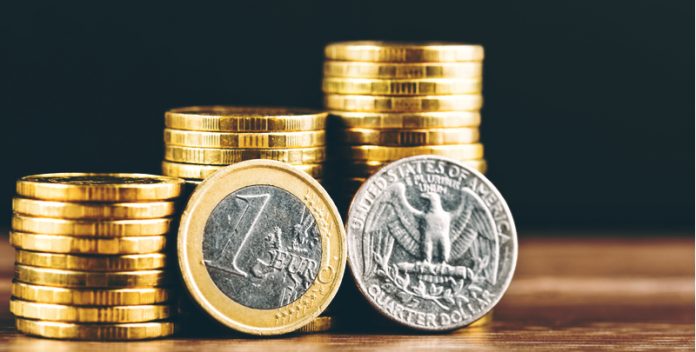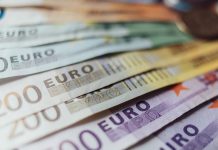The U.S. dollar has started this potentially quiet week on a steady note versus the euro. The euro U.S. dollar exchange rate hit a high of $1.1279 for the euro in the previous session whereas before, a firmer dollar pushed the exchange rate back down to a low of $1.1234. All in all, the previous session was fairly uneventful with the exchange rate moving within a range of just 45 points throughout the day.
| What do these figures mean? |
|---|
| When measuring the value of a pair of currencies, one set equals 1 unit and the other shows the current equivalent. As the market moves, the amount will vary from minute to minute. |
| For example, it could be written: 1 EUR = 1.12829 USD |
| Here, €1 is equivalent to approximately $1.13. This specifically measures the euro’s worth against the dollar. If the U.S. dollar amount increases in this pairing, it’s positive for the euro. |
| Or, if you were looking at it the other way around: 1 USD = 0.88789 EUR |
| In this example, $1 is equivalent to approximately €0.89. This measures the U.S. dollar’s worth versus the euro. If the euro number gets larger, it’s good news for the dollar. |
On a quiet day for both currencies, the euro U.S. dollar currency pair was struggling for direction. The euro initially strengthened as service sector sentiment data from IHS Markit pointed to powerhouses Germany and France performing well. The eurozone still showing signs of growth in the service sector and the eurozone economy as a whole is pointing to a positive bias. Slowly, this positive bias should start to seep into forecasters’ expectations for the eurozone for the year, which should give the euro a boost.
| Why does strong economic data boost a country’s currency? |
|---|
| Solid economic indicators point to a strong economy. Strong economies have strong currencies because institutions look to invest in countries where growth prospects are high. These institutions require local currency to invest in the country, thus increasing demand and pushing up the money’s worth. So, when a country or region has good economic news, the value of the currency tends to rise. |
The next set of data to watch will be eurozone retail sales statistics. Bloomberg analysts believe that EU sales will have ticked down slightly from 0.3% to 0.2% month on month, although the yearly rate is expected to stay firm at 2.3%. Strong annual sales could be the catalyst the euro needs to regain the lost ground versus the dollar.
The dollar was picking itself up from multi month lows hit on Friday following disappointing non-farm payroll figures. The weak numbers heightened concerns over job growth and inflation expectations in the U.S. When inflation expectations are hit, an interest rate rise from the central bank is less likely and the currency tends to fall.
The soft data showed no signs of abating yesterday; further data released from the U.S., in the form of service sector sentiment figures, were also weaker than expected. Once again, the weak numbers highlight underlying concerns over the U.S. economy. Yet despite the slowing economic growth investors still seem quite certain that the June rate hike will go ahead, placing a 95% probability that the Federal Reserve will increase interest rates, which is providing some support to the dollar.
| Why do raised interest rates boost a currency’s value? |
|---|
| Interest rates are key to understanding exchange rate movements. Those who have large sums of money to invest want the highest return on their investments. Higher interest rate environments tend to offer higher yields. So, if the interest rate or at least the interest rate expectation of a country is relatively higher compared to another, then it attracts more foreign capital investment. Large corporations and investors need local currency to invest. So more local currency used then boosts the demand of that currency, pushing its value higher. |
There is no influential economic data for the U.S. due to be released today.
This publication is provided for general information purposes only and is not intended to cover every aspect of the topics with which it deals. It is not intended to amount to advice on which you should rely. You must obtain professional or specialist advice before taking, or refraining from, any action on the basis of the content in this publication. The information in this publication does not constitute legal, tax or other professional advice from TransferWise Inc., Currency Live or its affiliates. Prior results do not guarantee a similar outcome. We make no representations, warranties or guarantees, whether express or implied, that the content in the publication is accurate, complete or up to date. Consult our risk warning page for more details.
This article was initially published on TransferWise.com from the same author. The content at Currency Live is the sole opinion of the authors and in no way reflects the views of TransferWise Inc.





